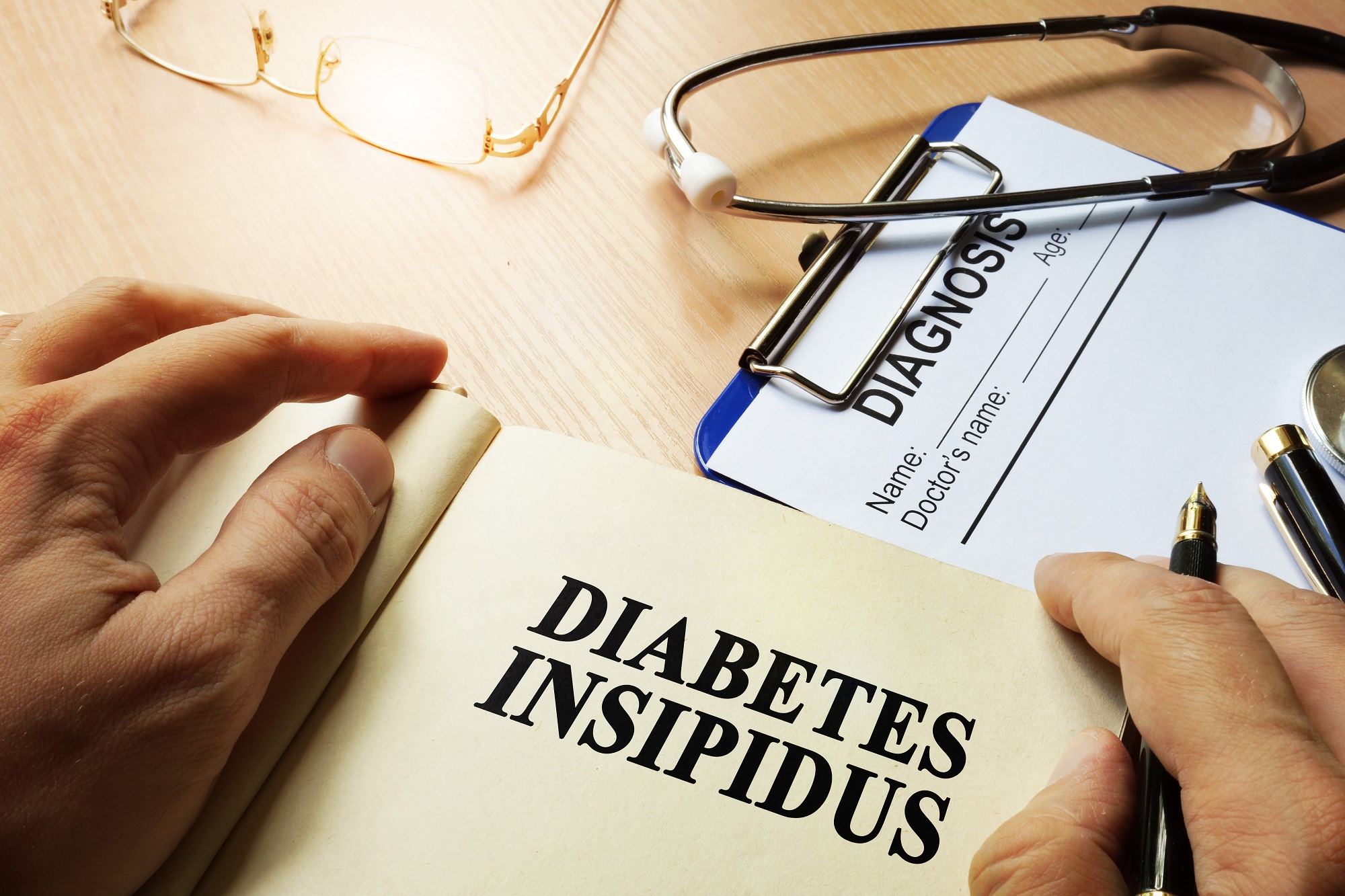Diabetes Insipidus
Diabetes Insipidus Diagnosis And Treatment Mayo Clinic
Diabetes Insipidus Practice Essentials Background Etiology
See full list on mayoclinic. org. Diabetes insipidus (di) is a condition characterized by large amounts of dilute urine and diabetes insipidus increased thirst. the amount of urine produced can be nearly 20 liters per day. reduction of fluid has little effect on the concentration of the urine. complications may include dehydration or seizures. Diabetes insipidus is a rare condition that causes your body to make a lot of urine that is "insipid," or colorless and odorless. most people pee out 1 to 2 quarts a day. people with diabetes. Diabetes insipidus is a rare disorder that occurs when a person's kidneys pass an abnormally large volume of urine that is insipid—dilute and odorless. in most people, the kidneys pass about 1 to 2 quarts of urine a day. in people with diabetes insipidus, the kidneys can pass 3 to 20 quarts of urine a day.

Diabetes Insipidus
Diabetes insipidus (di) is a metabolic disorder characterised by an absolute or relative inability to concentrate urine, resulting in the production of large quantities of dilute urine. 18) diabetes: foot ulcers (9) diabetes: gestational (49) diabetes: insipidus (3) diabetes: myopathy (1) diabetes: nephropathy (22) diabetes: retinopathy (34) Diabetes insipidus is a condition that results from insufficient production of the antidiuretic hormone (adh), a hormone that helps the kidneys and body conserve the correct amount of water. normally, the antidiuretic hormone controls the kidneys' output of urine.
Diabetes Insipidus Symptoms And Causes Mayo Clinic
renal disease coronary artery disease crohn's disease diabetes insipidus diabetes mellitus types 1 & 2 dysrhythmias epilepsy glaucoma haemophilia in diabetes mellitus types 1 & 2 no comments » diabetes insipidus author: diabetes insipidus is a rare disorder that Central diabetes insipidus. if you have mild diabetes insipidus, you may only need to increase your water intake. if the condition is caused by an abnormality in the pituitary gland or hypothalamus (such as a tumor), your doctor will first treat the abnormality. See more results.
Diabetes insipidus is a rare condition in which there is a problem with the secretion of antidiuretic hormone (adh). adh, also called vasopressin, controls the amount of water the kidneys release in the urine. adh is stored in the pituitary gland, which is located behind the bridge of the nose. Diabetes insipidus (die-uh-bee-teze in-sip-uh-dus) is an uncommon disorder that causes an imbalance of fluids in the diabetes insipidus body. this imbalance makes you very thirsty even if you've had something to drink. it also leads you to produce large amounts of urine. while the terms "diabetes insipidus" and "diabetes mellitus" sound similar, they're not related. Diabetes insipidus is a rare condition in which there is a problem with the secretion of antidiuretic hormone (adh). adh, also called vasopressin, controls the amount of water the kidneys release in the urine. adh is stored in the pituitary gland, which is located behind the bridge of the nose.
Diabetes insipidus occurs when your body can't properly balance the body's fluid levels. when your fluid regulation system is working properly, your kidneys help maintain this balance. the kidneys remove fluids from your bloodstream. this diabetes insipidus fluid waste is temporarily stored in your bladder as urine, until you urinate. the body can also rid itself of excess fluids through sweating, breathing or diarrhea. a hormone called anti-diuretic hormone (adh), or vasopressin, helps control how fast or slow f Diabetes insipidus is a rare condition where you pee a lot and often feel thirsty. diabetes insipidus is not related to diabetes, but it does share some of the same signs and symptoms. the 2 main symptoms of diabetes insipidus are:. Diabetes insipidus (di) is an uncommon condition in which the kidneys are unable to prevent the excretion of water. di is not the same as diabetes mellitus types 1 and 2. however, untreated, both di and diabetes mellitus cause constant thirst and frequent urination.
Diabetes Insipidus Diagnosis And Treatment Mayo Clinic
Diabetes insipidus (di) is a rare disorder that differs greatly diabetes insipidus from the familiar type 2 and type 1 diabetes. di happens when your body lacks enough hormones to signal to your kidneys to hang on. Diabetes insipidus is a condition where the body loses too much fluid through urination, causing a significant risk of dangerous dehydration as well as a range of other illnesses and conditions. it.
Provides information on the different forms of diabetes insipidus. includes an email support group, articles, brochures, faqs, and other information. Diabetes insipidus is a different disease from diabetes mellitus. their names are similar, but the only things they have in common is that they make you thirsty and make you pee a lot. if you have. Signs and symptoms of diabetes insipidus include: 1. extreme thirst 2. producing large amounts of diluted urine 3. frequent need to get up to urinate during the night 4. preference for cold drinksif your condition is serious, urine output can be as much as 20 quarts (about 19 liters) a day if you're drinking a lot of fluids. a healthy adult typically urinates an average of 1 or 2 quarts (about 1 to 2 liters) a day. an infant or young child with diabetes insipidus may have the following signs a Diabetes insipidus is caused by the inability of the kidneys to conserve water, which leads to frequent urination and pronounced thirst. drugs used to treat diabetes insipidus the following list of medications are in some way related to, or used in the treatment of this condition.
Komentar
Posting Komentar